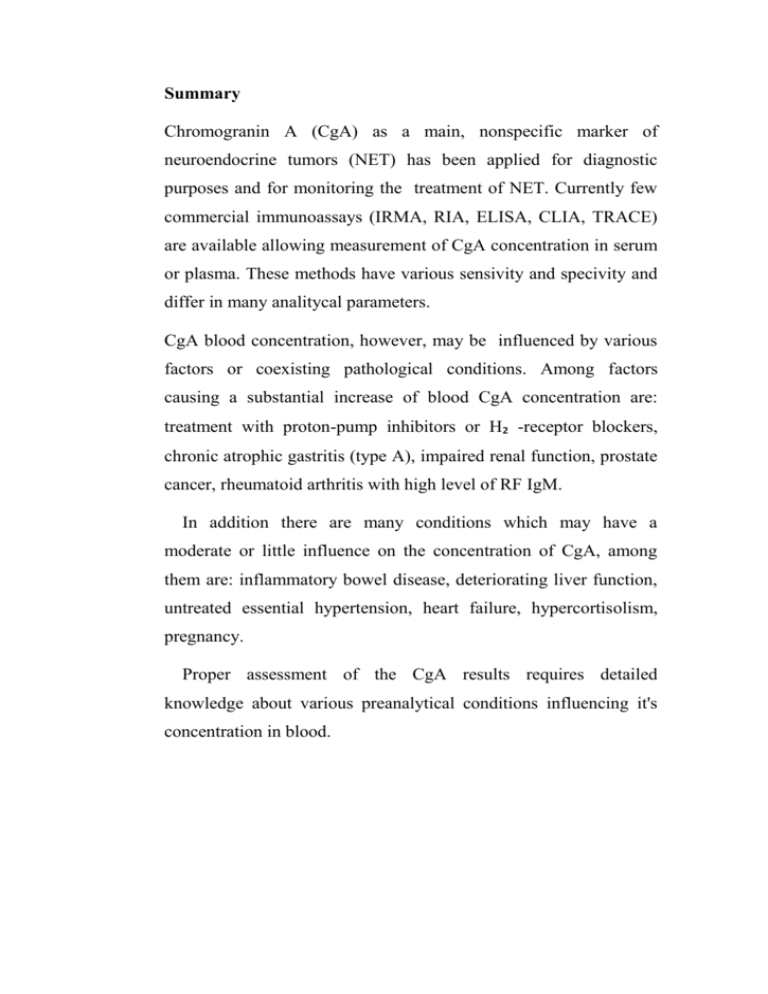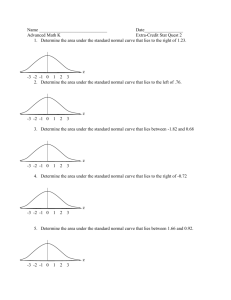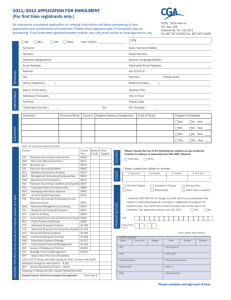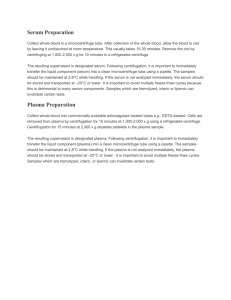Summary
advertisement

Summary Chromogranin A (CgA) as a main, nonspecific marker of neuroendocrine tumors (NET) has been applied for diagnostic purposes and for monitoring the treatment of NET. Currently few commercial immunoassays (IRMA, RIA, ELISA, CLIA, TRACE) are available allowing measurement of CgA concentration in serum or plasma. These methods have various sensivity and specivity and differ in many analitycal parameters. CgA blood concentration, however, may be influenced by various factors or coexisting pathological conditions. Among factors causing a substantial increase of blood CgA concentration are: treatment with proton-pump inhibitors or H₂ -receptor blockers, chronic atrophic gastritis (type A), impaired renal function, prostate cancer, rheumatoid arthritis with high level of RF IgM. In addition there are many conditions which may have a moderate or little influence on the concentration of CgA, among them are: inflammatory bowel disease, deteriorating liver function, untreated essential hypertension, heart failure, hypercortisolism, pregnancy. Proper assessment of the CgA results requires detailed knowledge about various preanalytical conditions influencing it's concentration in blood. The aims of the study were as follow: 1. To compare directly the results of serum and plasma CgA concentrations by IRMA and ELISA method in patients with neuroendocrine tumours. 2. To confirm the noted ealier differences in CgA levels measured in serum and plasma, and to establishe respective reference ranges in a group of healthy males. 3. To investigate the effect of postprandial test on the concentration of CgA. 4. To investigate the stability of CgA in serum samples submitted to three freeze-thaw cycles. 5. To investigate plasma CgA concentration in patients with various adrenal tumours concentrating mainly on the value of this determination as a screening test in cases suspected of pheochromocytoma. 6. To evaluate the usefulness of CgA measurements in patients with multiple endocrine neoplasia (MEN). Material and methods 150 blood donors and 122 patients with various NET 207 patients with adrenal tumours including 20 patients with pheochromocytoma, 28 patients with MEN syndromes and 27 patients with indication for the postprandial test. Results In patients with NET CgA concentrations were markedly higher in plasma than serum. Using IRMA method these difference in the range between 10-100 ng/ml approached 20% - 70% (median 61 vs. 42, p<0,0001), in the range 101-300 ng/ml – 12% - 60% (median 147 vs. 101, p<0,0001), and in the range 301 1076 ng/ml – 14% - 40% (median 486 vs. 356, p<0,0033). Highly significant (p<0,0001) positive correlation (r > 0.9) between the results of serum and plasma (K₂EDTA) CgA levels was found. The differences between CgA results in serum and plasma using ELISA were similar only a bit smaller. No significant differences between CgA levels in EDTA-plasma and heparinized-plasma samples in ELISA method (p=0,2531), and only very little difference in IRMA method (p<0,0021) were notted. In healthy males-blood donors, the median (and the range) of CgA concentration were as follow: for serum samples - 42,0 ng/ml (16108 ng/ml) and for plasma (EDTA₂K) samples - 58,0 ng/ml (23-153 ng/ml). The differences between serum and plasma ranged 15% – 79% (median 26%). Plasma CgA levels were significantly higher in relation to serum CgA levels (p<0,0001). Correlation of CgA in serum and plasma was r = 0,8493; p<0,01. The reference ranges for CgA measured in serum and plasma in males, expressed as 2,5 to 97,5 percentiles were: 21,0 – 108,0 ng/ml and 31,0 – 153,0 ng/ml respectively. The concentrations of CgA in 0’-60’ postprandial test in healthy subjects, were as follow: at fasting state the median of CgA was 26 ng/ml (19 - 46 ng/ml) and after 60 minutes - 34 ng/ml (22 – 44 ng/ml), the difference was 0% - 24% (p = 0,0580), whereas in patients – before meal (0’), the median of CgA concentration was 33,0 ng/ml (12 – 89 ng/ml), after 120 minutes - 33,5 ng/ml (19 – 91 ng/ml), the difference was 0% - 37% (p = 0,1024). Testing the effect of 3 consecutive cycles of freeze / thaw the notted differences in CgA concentration were not significant, 0.1% - 12.5%, median 5.2% (p = 0.0624). In the majority of patients with adrenal tumours not derived from neuroendocrine cells (chromaffin cells), except those with marked hypercortisolemia plasma CgA concentrations was below the cutoff value. In few patients with marked hypercortisolemia CgA levels were higher and ranged 150 – 319 ng/ml (median 225 ng/ml). In 17 of 20 of patients with pheochromocytoma CgA levels were markedly elevated and ranged 180 – 1971 ng/ml (median 425 ng/ml), but in 3 subclinical cases CgA levels were not elevated. In patients with MEN-1 (n = 12), the median CgA concentration in serum was 158 ng / ml (34 - 1800 ng / ml). The median CgA concentration in NET tumors forming part of the MEN 1 (including gastrinoma and carcinoid) was 974 ng / ml (216 1800 ng/ml), which resulted with 58% sensitivity and 100% specificity for the cut-off point of 100 ng / ml. In patients with MEN-2A (n = 10) median CgA concentration in serum was 61 ng / ml (42 - 268 ng / ml). In this group of patients there were eight patients after surgery (pheochromocytoma and / or medullary thyroid carcinoma), in whom the median CgA concentration after surgery was 65 ng / ml (42-76 ng / ml). In two patients with pheochromocytoma, serum concentration amounted to 237 ng / mL and 268 ng / ml. CgA Conclusions 1. Concentration of chromogranin A in plasma appears to be significantly higher than in serum. 2. Due to significant difference in CgA concentration measured in plasma and serum, the obtained results should be referred to the separate reference ranges corresponding to the type of material used. 3. Food intake in most subjects had no effect on serum CgA , but in some cases the impact was significant. 4. Three times freezing and thawing of serum samples had no influence on measured CgA concentration. 5. In preliminary differential diagnosis of adrenal tumours a markedly increased CgA level might be a useful additional marker of pheochromocytoma, however because in some subclinical cases CgA level may not be raised, therefore a non increased CgA level does not exclude pheochromocytoma, only suggest that such diagnosis is less likely. 6. In the majority of patients with adrenal tumours not derived from neuroendocrine cells and in some with adrenal carcinoma, except those with significant hypercortisolemia, the plasma CgA concentrations were below the cut-off value. 7. In patients with Multiple Endocrine Neoplasia investigation of CgA level may be used in monitoring eventual coexistence or appearance of carcinoid, pheochromocytoma. pancreatic neuroendocrine tumours or








